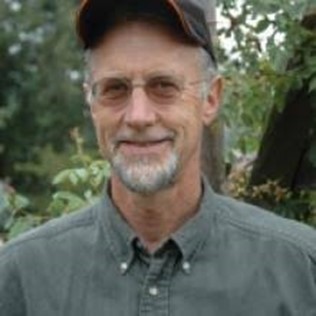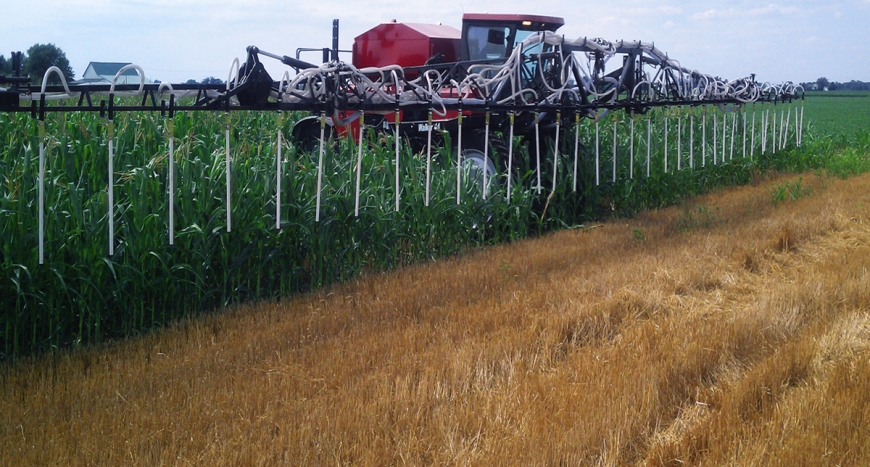Cover Crop Adoption – Expanding Geometrically as Knowledge Expands Exponentially
“Planting annual ryegrass in the fall and seeing nothing come up is greatly disappointing,” said Jamie Scott, a 3rd generation Indiana farmer. “At first, cover crop experts chalked it up to planting too late, for example, or not enough fall rain to germinate the crop, or winterkill – getting frozen out in a harsh winter. That was in the early 2000s,” he added. “That was back when there was still a lot to learn about cover crops. And we’re still learning.”
By 2010, after extensive field trials and research, agronomists discovered that there could be residual herbicide in the field that prevented cover crops from taking root. “We would spray herbicides on fields in the fall to control winter annuals,” said Jamie, now a 20-year veteran of cover crop use. “And by the end of the winter, the effectiveness would have lapsed. But companies have come out with longer lasting herbicides that will keep weeds down for a year,” he added. “That’s great if you want the lasting effect, but it’s a problem if you plan to use a cover crop the following year.”(Check out this flyer)
Jamie is among a growing number of Midwest farmers who have expertise on how to successfully manage cover crops. After their first year, trying it out on three fields, the Scotts went all in, and now no-till and cover crop their entire 2000 acres. He has helped to pioneer aerial application of cover crop seeds, after experiencing how difficult it is to consistently get a cover crop planted after fall harvest.
“In our second year with cover crops, we tried a variety of planting methods. The third year, with a lot of advice from Mike Plumer and Dan Towery, we were putting the seed on with aircraft. We flew it on prior to harvest and thus gained weeks on the planting date. We tried using a helicopter one year, but shortly realized its shortcomings,” he continued. “We were trying to save a few pennies per load and ended up losing dollars on the other end.”
As the years went by, the knowledge about when and how to fly on seed kept growing, and Jamie has presented to national audiences with details needed to get started. As a result, Jamie started a side business – Scott’s Cover Crops LLC – in order to help other growers who now wanted seed applied earlier in the fall. “At the start, it didn’t really interfere too much with our farming operation,” Jamie said, “and my dad handled that for a month while I organized the cover crop application for customers.”

“But now it’s become almost a year-round business,” he explained. “As a turnkey operation, I manage the seed mix purchase and delivery, the aerial application and the termination of it in the spring,” he said, “and among the clients I’ve got in my cell phone, you’re looking at more than 100,000 acres.” That amounts to over 400 farmers in Northern Indiana and Southern Michigan.
Jamie is enthusiastic in terms of describing the changes in the industry in his lifetime. “I compare what happens to an individual who doesn’t care for themselves to that of the ag industry,” he said. “When I get to racing around during a busy time and I don’t eat right, I’m gonna pay for it. If I do that year after year, I run a higher and higher risk for some kind of health scare – heart attack or cancer, for example. Well, the same is true for farming. We’ve run up against a health scare, in which we’ve run down the quality of the soil and polluted the water and air in the process.”
In addition to his work in the field, Jamie has also been active as a cover crop educator, attending trade shows and introducing newcomers to cover crops, just as he was introduced 20 years ago. He is also the Chairman of his county’s Soil and Water Conservation District (SWCD), as well as being Vice-President of the statewide association of SWCDs. In that work over the past years, he has continued to learn about the partnerships that have formed to better protect the precious resources. Two in particular that he has worked with: Bob Barr, a scientist working for the Center for Earth and Environmental Sciences, and Jennifer Tank, PhD, Director of Notre Dame University’s Environmental Change Initiative. “Those people, and their universities, are helping all of us to understand the value of capturing carbon in the soil, keeping nutrients in the field, and thus improving the quality of watersheds that eventually feed the Great Lakes and the Gulf of Mexico.”












